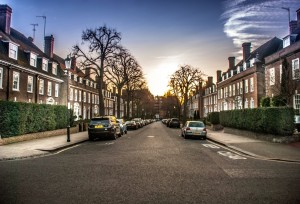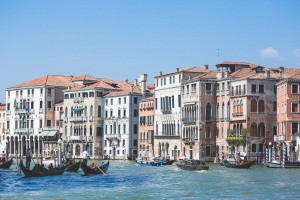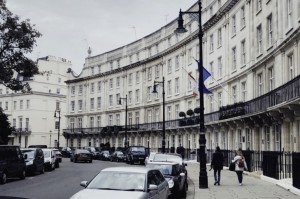Terrace housing has become an icon of development in Great Britain and Ireland. But, did you know that despite its very British connotations, the aesthetic of the terrace house was, in its origins, an attempt to bring the architectural style of Palladio and the Italian Renaissance masters across the Channel? The Venetian palazzos, built around 1550 in Northern Italy are a great example of what the first terrace housing developers had in mind.
The trick, of course, was to be able to adapt the architecture of a palazzo to London, and to the much smaller building areas it offered. In order to do so, space was maximised by placing houses in a row, and building labour was standardised by making the homes in sets of almost identical mirrored pairs. Even with this efficient agenda, however, the original terrace houses did not look much like they do today.
Terrace housing in London, and in other British cities such as Bath or Edinburgh, started to appear in the mid 17th century. In their origins, they were conceived as desirable houses for aristocrats, and sprang up mostly around well-off areas such as Regents Park and Grosvenor Square, for those members of the nobility who had to spend time in the city. Built in a classic Georgian style, the houses provided an all-in-one solution to accomplish the basic needs of a noble family within the city scale: family living, entertaining, and housing the servant quarters in the same building. During these Georgian times, terraces were typically placed around a communal square garden, giving the neighbours a sense of having a private piece of countryside within the city.

The grandeur associated with terraces did not last long, however. After the Great Fire of London in 1666, terraces gained enormous popularity as a way of rebuilding the city quickly and efficiently. The disaster worked much like a wildfire: initially causing immeasurable destruction, but sparking a renewed wave of growth and development afterwards. This time, however, the inhabitants that the developers had in mind were middle-class industrial workers rather than noble families.
In the course of the Victorian era, the terrace format changed from being a privileged form of city housing to becoming the go-to residential architecture solution to overpopulation. The new wave of terraces was very similar to the style we know today: they were built with efficiency in mind and arranged on two facing rows on a single street. Instead of the more noble stone of the Georgian houses, these terraces were made with cheaper materials supplied en-masse by the engines of the industrial revolution. A not-so-fun fact about these early terraces is that most were not provided with plumbing or sanitary installations… instead, they had outhouses that were sometimes shared between several households. The poor sanitary circumstances of the early Victorian terrace houses enhanced many of the hygiene problems faced by London as its population increased dramatically during the Industrial Revolution.
Even though these standards were raised, the early 20th century still associated terraced with overcrowding and poor sanitation, and terraces for the middle class lost popularity in favour of new tower constructions. However, as the modernist dream of the highly organised vertical city did not quite deliver its promises, terraces gained a kinder perspective again as people started to regard them as a good balance between city life, family homes, and private outdoor space.
Today, terraces represent the perfect marriage between living in the city and enjoying a family home with a sense of community. Terrace houses continue to increase in popularity and are constantly being updated and upgraded to suit their inhabitants’ needs. Divisions into several flats, regroupings to make single-family homes, extensions, renovations, and additions have passed and gone through many of these houses. Now, more than 350 years after they started to populate the streets, terraces keep proving to be immensely versatile homes that evolve with the nation, and homes that can constantly adapt to the needs of their time.



